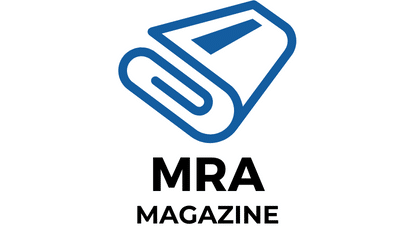How Is Blockchain Technology Changing the Dynamics of Intellectual Property Rights?

Blockchain technology, a digital ledger of transactions, is revolutionizing various aspects of our lives and industries. It is best known for its role in cryptocurrency, but that’s just the tip of the iceberg. Among many other applications, blockchain technology is shaping the way we manage intellectual property rights (IPR). Throughout this article, you’ll learn how blockchain technology is changing the dynamics of intellectual property rights, from copyright and patents management to legal issues, data security, and more.
Blockchain and Intellectual Property: An Introduction
Before delving into the details, let’s briefly explain what blockchain and intellectual property are and how they are related.
Lire également : Can Virtual Reality Exposure Therapy Effectively Treat Phobias?
Blockchain is a data structure that allows the creation of a digital ledger of transactions and is shared among a network of computers. It uses cryptography to allow each participant on the network to manipulate the ledger in a secure way without the need for a central authority. Once a block of data is recorded on the blockchain ledger, it’s extremely difficult to change or remove.
Intellectual property, on the other hand, refers to creations of the mind such as inventions, literary and artistic works, designs, symbols, names, and images used in commerce. Intellectual property rights (IPR) are the rights given to persons over the creations of their minds. They usually give the creator an exclusive right over the use of his/her creation for a certain period of time.
A lire en complément : What’s the Progress in Textile-Based Energy Storage for E-Textiles?
The intersection between blockchain and intellectual property rights is offering exciting new possibilities for creators and innovators. Blockchain technology promises to simplify many of the challenges related to digital intellectual property management while improving security and efficiency.
Digital Copyright Management With Blockchain
Traditionally, copyright management has been a laborious task requiring considerable manual effort and record-keeping. Moreover, proving the ownership of digital assets or identifying copyright infringements often involve lengthy, complicated processes. The advent of blockchain technology, however, is set to change this.
By creating a decentralized, tamper-proof ledger, blockchain technology enables creators to register their work in a manner that can provide indisputable proof of ownership. Each entry in the blockchain ledger constitutes a permanent, unchangeable record. This means that once a creator registers their work on a blockchain-based platform, they create a time-stamped proof of their ownership.
In addition, blockchain-based platforms can also automate the licensing process using smart contracts. These are self-executing contracts where the terms of the agreement are written into code. They execute and enforce themselves, removing the need for an intermediary.
Patents and Blockchain Technology
Just like copyright, patents are another area of intellectual property where blockchain technology can be highly beneficial.
Applying for patents is a long and complex process that includes many steps such as the examination of the invention’s novelty and usefulness, correspondence with the patent office, and publication of the patent application. Blockchain technology can streamline this process, making it more efficient and transparent.
By applying blockchain technology, the patent application process could be conducted on a transparent, decentralized platform. Every step of the application and examination process can be recorded on the blockchain, creating a transparent and unchangeable record.
Moreover, the transparency of the blockchain could help reduce patent disputes. By providing a clear, transparent record of the entire patent process, any disputes about the invention’s novelty or the patent’s validity can be easily resolved by referring to the blockchain record.
Legal Challenges and Blockchain
While blockchain technology offers great potential for managing intellectual property rights, it’s not without its legal challenges.
One major challenge is the question of jurisdiction. Given the decentralized nature of blockchain, it can be difficult to determine which country’s laws apply to a blockchain transaction. This could lead to legal uncertainty and make it difficult to enforce intellectual property rights on a blockchain platform.
Another challenge is the issue of privacy. While blockchain transactions are transparent and immutable, they are also pseudonymous. This means that while you can trace transactions back to a unique identifier, it’s not always clear who the real-world person behind the identifier is.
Blockchain, Security and Intellectual Property Rights
Given the digital nature of intellectual property assets, security is a major concern. Blockchain technology offers a high level of security that is particularly suited to protecting intellectual property assets.
A blockchain is distributed across a network of computers, with each block containing a cryptographic hash of the previous block. This means that in order to tamper with a single record, a hacker would need to change every single record in the chain across all the distributed versions of the chain. This makes blockchain technology highly secure and resilient to fraud.
Additionally, blockchain technology can also be used to prevent digital piracy, a major issue in fields like music, film, and software. By creating a unique, immutable record for each digital asset, blockchain can be used to track and verify the legitimacy of digital assets, making piracy much more difficult.
In conclusion, blockchain technology has the potential to revolutionize the management of intellectual property rights. It offers solutions for many of the current challenges, such as proving ownership, tracking usage, automating licensing, and ensuring security. However, for blockchain technology to realize its full potential in this area, legal and regulatory challenges need to be addressed.
Blockchain-Based Solutions for Trade Secrets and IP Infringements
Trade secrets, unlike patents and copyrights, do not have a formal registration process. They rely on the owner’s ability to keep the information confidential. With the current rise of cyber-attacks and data breaches, protecting trade secrets is becoming increasingly challenging. Here, blockchain technology could offer a reliable solution.
Blockchain’s decentralized, transparent, and immutable nature makes it an ideal tool for establishing the existence and ownership of trade secrets. The blockchain can create a secure, time-stamped record of the creation, modification, and usage of a trade secret. This makes it easier to establish a violation of trade secrets, should a dispute arise. In addition, this secure, transparent approach could deter potential infringers, knowing that their activities could be traced and proven on the blockchain.
Moreover, through the use of smart contracts, blockchain could automate the non-disclosure agreements (NDAs) often used to protect trade secrets. A blockchain-based smart contract could automatically enforce the terms of the NDA, reducing the risk of breaches and improving the efficiency of legal enforcement.
Cloud Computing and Open Source in Blockchain IP Management
Another significant application of blockchain technology in intellectual property rights management is in the area of cloud computing and open source.
Cloud computing has transformed the way businesses operate, but it has also introduced new challenges for intellectual property rights management. With data stored and processed in the cloud, it becomes difficult to track and control intellectual property rights. Here, a blockchain-based intellectual property management system could provide a solution. It could securely record and track the usage of intellectual property in the cloud, providing clear and transparent ownership records.
In the world of open source, blockchain technology could also play a significant role. Open source projects are based on the principle of shared, collaborative development. However, this can lead to disputes over ownership and contributions. A blockchain management system could provide a clear, immutable record of contributions to an open source project, helping to resolve disputes and protect the rights of contributors.
Conclusion
In the face of rising digitalization and globalization, managing intellectual property rights poses significant challenges. However, blockchain technology is emerging as a promising solution. Whether it’s copyright management, patent registration, trade secret protection, or managing IP in the cloud and open source environment, blockchain technology has the potential to provide secure, transparent, and efficient solutions.
From smart contracts automating licensing agreements to the tamper-proof, time-stamped records providing proof of ownership, blockchain offers exciting possibilities for the future of intellectual property management. The technology’s unique features of decentralization, transparency, and security can solve many of the current issues in intellectual property rights.
Yet, for blockchain to fully reshape the intellectual property landscape, legal and regulatory issues need to be addressed. These include jurisdiction challenges, privacy concerns, and how to integrate blockchain with existing legal and regulatory frameworks.
As we move forward, it will be crucial to foster a collaborative dialogue among technologists, legal experts, policymakers, and stakeholders to fully harness the potential of blockchain technology in the realm of intellectual property rights. The future of intellectual property rights blockchain could very well be a game-changer in the dynamic world of innovation and creativity.
